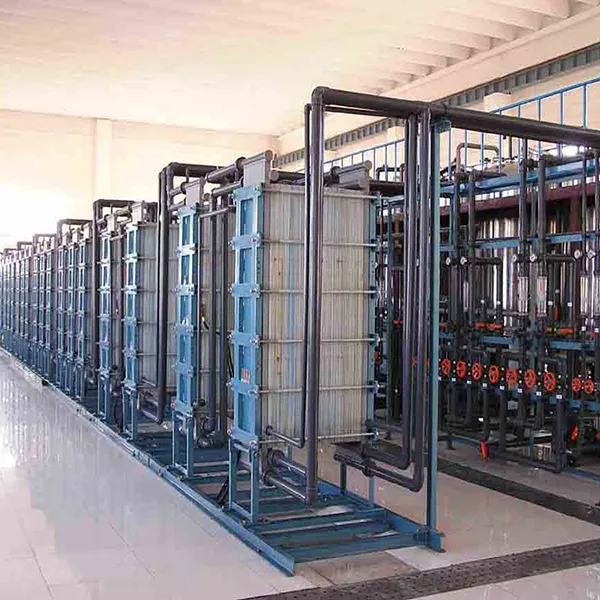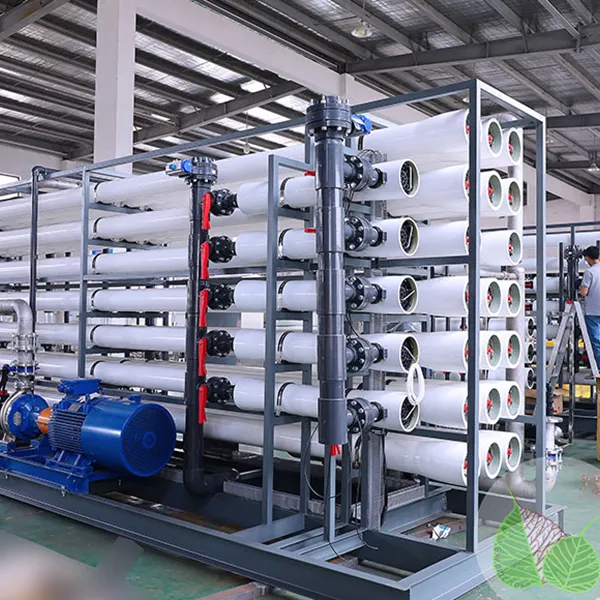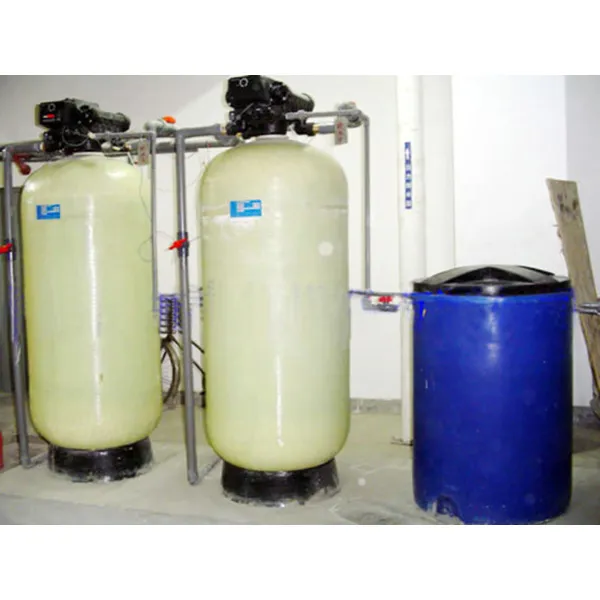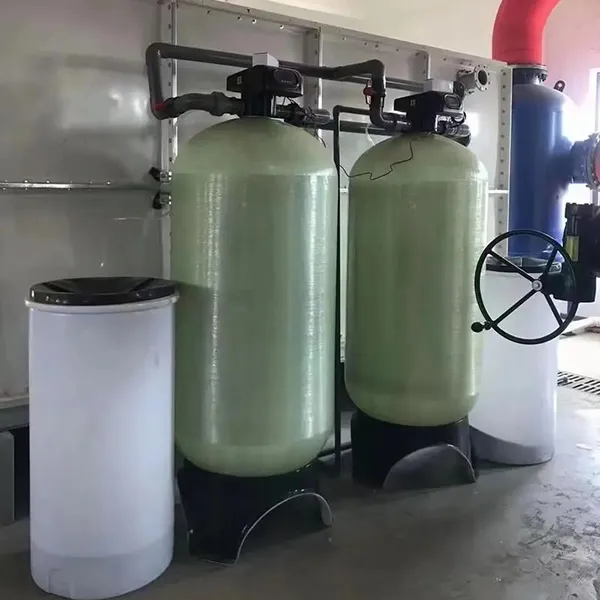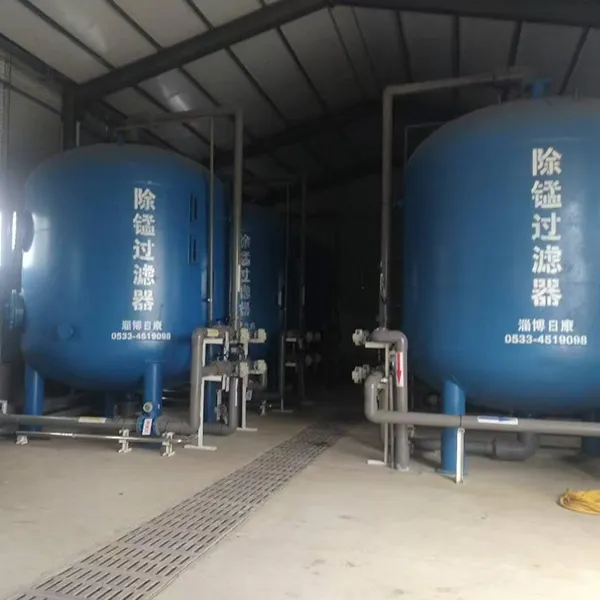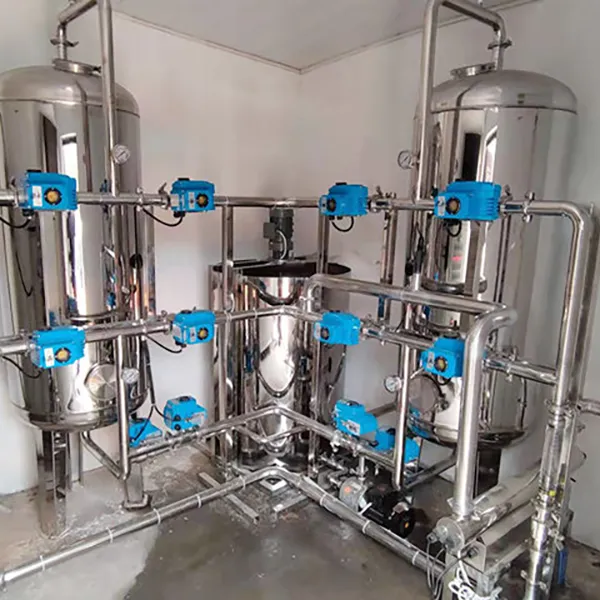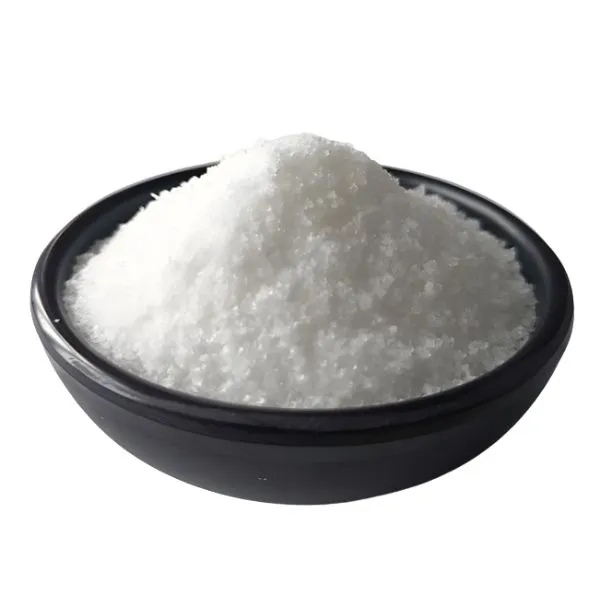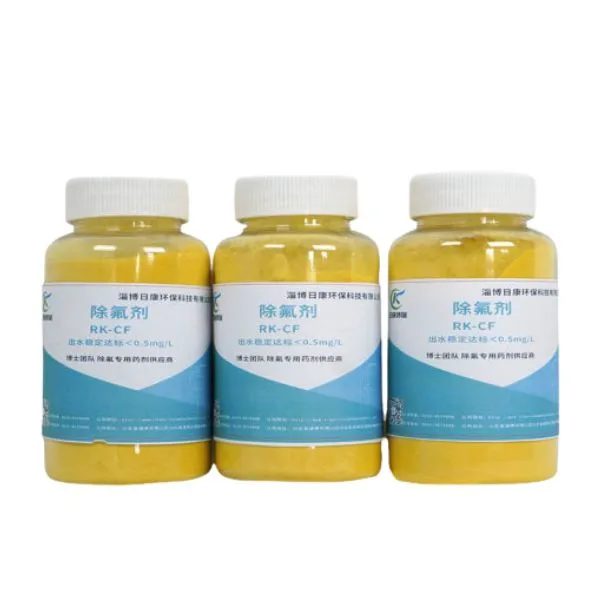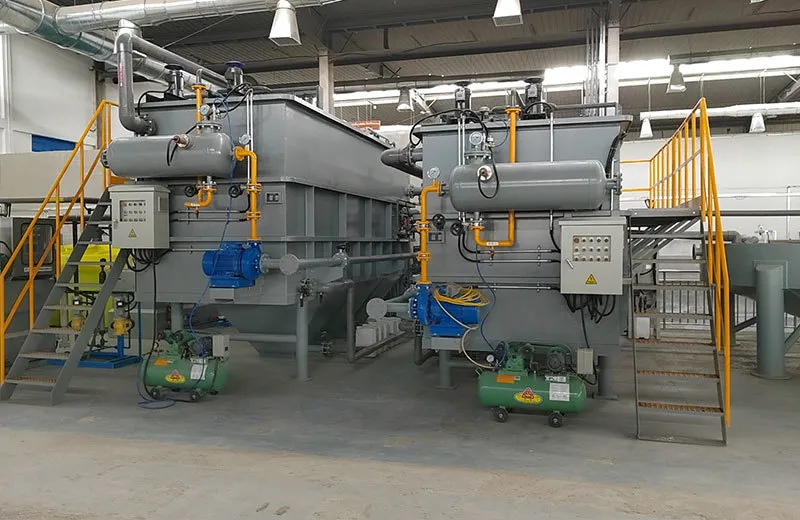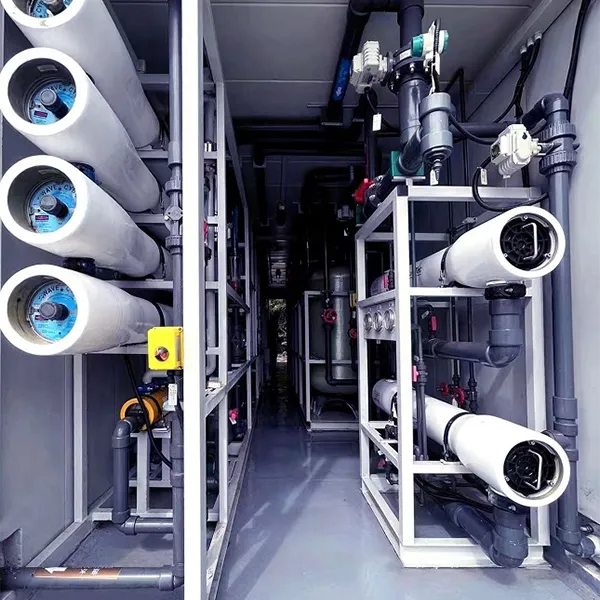

Seawater Desalination Systerm
Core Technology and Process Flow
Reverse Osmosis (RO) Principle: Seawater is pressurized to 60-80 atmospheres through a high-pressure pump, forcing water molecules to pass through nanoscale pores of the reverse osmosis membrane, retaining 99% of salt, organic matter, and microorganisms.
Advantages: Low energy consumption (2-5 kW·h/m³), no phase change, high degree of automation, equipment lifespan of 5-10 years.
Distillation Method
- Multi-Stage Flash (MSF): Heats seawater to high temperature, gradually evaporates and condenses fresh water, suitable for areas with abundant thermal energy.
- Multi-Effect Distillation (MED): Uses steam for multi-stage evaporation, higher thermal efficiency (energy utilization rate up to 70%), suitable for integration with renewable energy.
System Modules
Pretreatment System: Includes sterilization and algae killing (sodium hypochlorite generator), coagulation filtration (FeCl₃), security filtration (5μm filter cartridge).
Intelligent Control System: Real-time monitoring of water quality, pressure, temperature, supports remote operation and maintenance, and fault warning.
Post-treatment System: Disinfection (UV/chlorine), pH adjustment, mineral addition, ensuring water quality meets standards.
- For the actual situation of water shortage in each region, reverse osmosis seawater desalination equipment can be selected. This equipment has a small footprint and is easy to install, requiring only a few weeks to complete installation and commissioning. Its high efficiency and flexibility make it an ideal choice for solving water resource problems.
- After the reverse osmosis seawater desalination equipment is put into operation, the water quality meets national drinking water standards, with key indicators such as COD (Chemical Oxygen Demand), BOD (Biochemical Oxygen Demand), and TDS (Total Dissolved Solids) all below the specified limits. Urban residents and industrial users thus obtain sufficient high-quality water sources, effectively alleviating water resource shortages. Especially during the dry season, the stable water supply capacity of seawater desalination equipment is particularly important.
- The reverse osmosis seawater desalination equipment is equipped with an intelligent control system that can monitor equipment operation status in real-time and automatically adjust operating parameters. After short-term training, staff from the city’s water department can easily operate and maintain the equipment, simplifying management and maintenance processes. The intelligent control system not only improves equipment operation efficiency but also reduces the risk of human operation errors, ensuring long-term stable operation of the equipment.
- Compared with traditional water sources, the construction and operation costs of seawater desalination equipment are significantly lower. The city can save a large amount of water resources costs annually, improving the economic benefits of the project. In addition, the equipment’s high efficiency and low energy consumption characteristics also reduce operating costs, making the project more sustainable.
Advantages of seawater desalination equipment
- Good water quality: The water quality after treatment through reverse osmosis membranes is pure, meeting industrial and domestic water standards, and can be directly used for various purposes.
- Low energy consumption: Compared to thermal processes, membrane processes have lower energy consumption and more economical operating costs.
- Simple process: Membrane processes are easy to operate and maintain, suitable for large-scale promotion and application.
- Small footprint: Seawater desalination equipment has a compact structure and small footprint, can be installed in narrow spaces such as engine rooms, decks, cabins, and corridors.
- High adaptability: Seawater desalination equipment has strong adaptability and can be used not only on land but also in special environments such as water-scarce islands and drilling platforms.
The implementation of seawater desalination projects not only solves urban water resource shortages but also has positive impacts on the surrounding environment. The treated high-quality water can meet the diverse needs of residents and industrial users, improving urban living quality and economic development levels. In addition, the equipment’s environmental protection performance and low energy consumption characteristics also align with sustainable development concepts, laying the foundation for building green and ecological urban environments.

